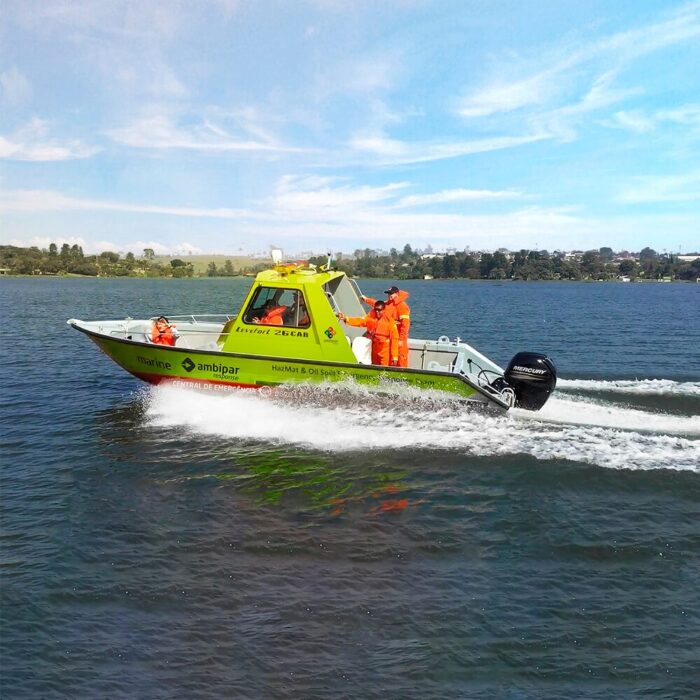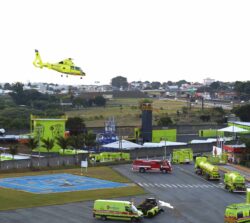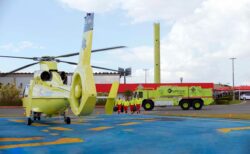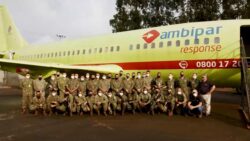Find out what the types of emergencies in the maritime modal are and the documents you need to have in order to guarantee efficient responses

By Equipo de Redacción
Posted in May 11, 2021

Objective description: Understand the types of emergencies that can happen in the maritime modal and the response techniques used by specialists. Know more.
Due to the high potential for socio-environmental impact caused by accidents in the maritime environment, it is necessary to have well-defined strategies for quick responses to these types of emergencies, as well as to have trained and qualified teams to carry out preventive maintenance.
But, do you know what they are and how the incidents happen in the maritime modal? Do you know how to act before them, what products and equipment are needed?
In this article we will tell you all about it. Check out!
What are emergencies in the maritime modal?
These types of occurrences can happen at sea, close to the coast, off shore, or even at port terminals.
When related to the environment, they refer to leaks or spills most of the time from diesel oil, but it can also be molasses, inverted sugar, paints, vegetable oil and / or skin pit effluent, for example.
When dealing with the health and safety of people, these emergencies relate to:
- Fires;
- explosions, including large ones;
- Severe personal accidents, such as falling from a height, burns, burial, accident and /or confined space;
- bad weather (gales, storms);
- among others.
As you can see, there are several possibilities for accidents that can happen involving the maritime modal. The fact is that, regardless of the emergency situation, they involve material losses and major damage to the environment and society.
As it also concerns port terminals, the risks are accentuated, due to the extent that they occupy and the forms of movement of the cargo that exist there.
How do emergencies in the maritime modal occur?
In the case of oil spills or spills, these incidents are usually from the material transported by the ship itself or it can be from the reservoir that stores the fuel for the ship to operate.
The occurrences can also come from the supply of vessels, or during the loading and unloading itself, as in the case of containers. Bulk cargo ships are also subject to risks and emergency situations.
Specifically dealing with the port terminal, accidents can happen on scales, conveyor belts, hoppers / platforms, workshop areas / machinery yard, dispatch tower and administrative areas.
How to act in the face of these emergencies?
Given the diversity of possibilities for scenarios that may occur in the maritime modal, and considering the resulting socio-environmental impacts, it is necessary to analyze what risks a company operating in this modal is subject to, in order to identify what are the possible situations to happen.
Based on this work, it is necessary to verify what resources exist for emergency responses, in order to define the conducts and action procedures before them. It is important to establish trained and ready teams to respond to these occurrences, as well as to carry out preventive maintenance.
In summary, the way of dealing with emergencies in the maritime modal follows what is defined in the Emergency Care Plan (ECP), the Individual Emergency Plan (IEP) and the Emergency Control Plan (ECP), prepared according to the potential port or company terminal and their respective activities.
Let’s learn about them with more details.
- The ECP for emergencies in the maritime modal
As in other modes, activities with potential for accidents in the maritime mode need an Emergency Care Plan (ECP).
The ECP in the maritime modal aims to provide a set of guidelines and information aiming at the adoption of logical, technical and administrative procedures, in order to prevent and minimize the risks and potential impacts of activities subject to emergency situations.
Each plan is unique and varies according to the company and the activity it performs. But its elaboration always follows a basic structure:
Disclosure, implementation, integration with other institutions and maintenance of the plan.
- Description of the involved facilities;
- Considered accidental scenarios;
- Coverage area and limitations of the plan;
- Organizational structure;
- Flowchart of trigger;
- Actions to respond to emergency situations; and
- Propagation, implementation, integration with other institutions and maintenance of the plan.
This way, with the ECP it is possible to identify possible emergency scenarios and thus establish a standard of conduct to respond to them quickly, safely and efficiently, minimizing any type of environmental impact.
Therefore, in preparing this document, the company demonstrates its concern for the preservation of human lives, the safety of communities and the preservation of the environment.
2. Individual Emergencial Plan (IEP)
In addition to the ECP, in the maritime modality, the Individual Emergency Plan (IEP) must also be prepared. This plan complies with CONAMA Resolution 398/2008 (National Environment Council), being composed of a set of documents, which provides for actions to be taken in the event of an oil, noxious and dangerous substances incident.
With IEP, companies guarantee immediate response actions using specific resources and prepared staff.
The IEP follows the following structure:
- Installation identification;
- Accidental scenarios;
- Information and procedures for responding;
- Oil spill warning systems;
- Incident reporting;
- Organizational response structure;
- Response equipment and materials;
- Operational response procedures;
- Closure of operations; and
- Maps, nautical charts, plans, drawings and photographs.
3. The Emergency Control Plan (ECP)
Finally, another document necessary for those working in the maritime modal, especially for ports, is the Emergency Control Plan (ECP).
The ECP follows the Regulatory Norm NR-29. It aims to provide for actions on land and on board, for the control and effectiveness in the treatment of events liable to accidents that may cause internal and external repercussions to the port unit. Thus, it provides the necessary conditions for the prompt response to emergencies and the mitigation of damages, so that the resumption of operations is quick, minimizing environmental impacts and preventing or mitigating any damage to property, public and private.
The ECP structure is composed of a set of emergency measures and procedures, first aid and medical care. They indicate the responsibilities and actions to be taken immediately after an incident. They also define the human resources, materials and equipment suitable for preventing, controlling and combating emergencies in port facilities that threaten physical integrity and human health.
For each class of risk that exists, there must be their respective file, located in the spaces where dangerous products are operated. Basic and specific response procedures, area evacuation, communication, combat and post-emergencies actions, training and simulations, dissemination and maintenance of the plan must also be indicated.
Oil leak and spill response
As for responding to emergencies that involve leaking or spilling oils or other substances derived from petroleum, there are some specific techniques based on safety protocols and national and international standards. These accidents are usually the most common in the maritime modal.
In oil leaks and spills at sea, containment barriers are used that are able to efficiently remove all the product from the water, avoiding contamination of the water resource, in addition to protecting all marine life in the area. There is also a way to use absorbent blankets for minor product spills. As it has a hydrophobic characteristic, they are able to separate the product from the water quickly and efficiently.
In the event of leaks or spills of oil and oil products in ports and around marine facilities, it is possible to use absorbent peat. The product is able to absorb all the spilled substance in order to minimize impacts. Thus, the emergency teams are able to do all the cleaning of the place and prevent major accidents that may happen if other chemicals are mixed or come into contact with fire.
The importance of emergency preparedness teams
For emergencies in the maritime modal it is essential to have readiness response teams. These professionals are allocated in bases within or very close to the ports and are activated in the event of any type of accident. Thus, by responding to emergencies quickly, environmental impacts are mitigated.
Ambipar specializes in emergency care in all modes, with teams on call 24 hours a day, seven days a week and more than 150 bases strategically located around the world to ensure quick responses. The professionals are fully trained and certified internationally, in addition, they use high-tech equipment to contain oil spills or leaks in emergencies in the maritime modal. It also has preventive maintenance teams in the ports.


